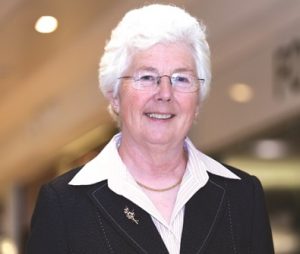Drax remains positive despite £28m fine and challenging markets

NORTH YORKSHIRE power station operator Drax Group endured a challenging year that will continue until at least the election, but remains positive about delivering its long-term biomass strategy.
It was fined £28m for failing to meet environmental targets under the government’s Community Energy Saving Programme (CESP) in November, of which £20m was a direct financial penalty.
Drax also faces uncertainty with the general election, given Labour’s plans for an energy price freeze.
In 2014 its key measure of profitability, EBITDA, was basically flat at £229.4m, although the effect of derivative contracts meant that pre-tax profits were five times higher than a year earlier, at £165.9m.
Dorothy Thompson, chief executive of Drax, said: “External factors have been challenging, with regulatory headwinds in 2014 exacerbated by the recent major deterioration in commodity markets. In these conditions we are placing particular focus on business efficiencies and cost control measures.
“However, I am pleased that the key activities within our direct control have gone very well indeed. We will deliver our biomass transformation plans, converting three units to sustainable biomass, on time and on budget.
“We are delivering Europe’s largest decarbonisation project whilst producing 8% of the UK’s electricity. Renewable electricity from sustainable biomass is flexible and available 24/7, providing low carbon electricity, whenever it is needed.
“At the core of the Group is a very high quality power station, hugely important to the security of electricity supply in the UK.”
At Drax, it has converted two units to biomass with it said “continue to perform very well”.
“Our main priority in 2014 was the delivery of our biomass transformation project,” added Ms Thompson.
“We are on track to complete our transformation into a predominantly biomass-fuelled power provider in 2016.
“We have continued to make good progress with our biomass transformation project, having converted our first unit in May 2013. We modified a second unit in May 2014 to operate as an enhanced co-firing unit, burning at least 85% of its fuel from biomass, which was subsequently fully converted to biomass in October. Both biomass units continue to perform very well and are operating in line with plans.
“A third of our generation capacity is now biomass-fired, with biomass representing 29% of our overall fuel mix in 2014, compared to 12% in 2013. As a result, carbon (CO2) emissions and the associated cost of allowances purchased under the EU-ETS have fallen year-on-year. The transformation is providing significant earnings protection to the Group, compared to being a solely coal-fired generator.”






